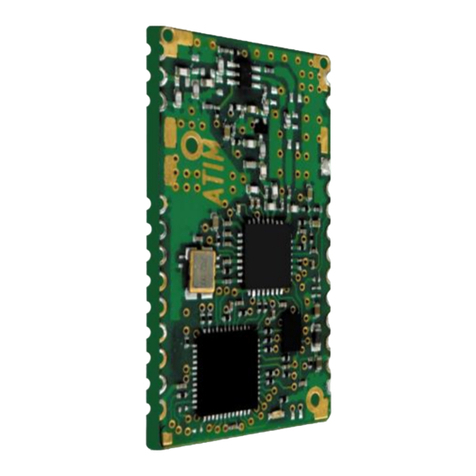RSSI reader (ATT09) ................................................................................................................................23
Continuous RSSI reader (ATT0A) ............................................................................................................23
5.7.2 Periodic emission (ATT0E)..........................................................................................................23
5.8 CONFIGURATION:..........................................................................................................24
6LoRaWAN.......................................................................................................................26
6.1 Generalities......................................................................................................................26
6.1.1 • Bidirectional endpoint (Class A):...............................................................................................27
6.1.2 • Bidirectional endpoint with programed receive windows (Class B):.........................................27
6.1.3 • Bidirectional endpoint with continuous reception (Class C): ....................................................27
6.2 Communication ................................................................................................................27
6.2.1 • UnConfirmed frame:..................................................................................................................27
6.2.2 • Confirmed frame:.......................................................................................................................27
6.3 Radio frequencies characteristics....................................................................................28
6.4 Radio................................................................................................................................28
6.4.1 Choosing the LoRaWAN class....................................................................................................28
6.5 Main parameters ..............................................................................................................28
6.5.1 OTAA process .............................................................................................................................30
6.5.2 Advanced parameters .................................................................................................................30
6.6 LoRaWAN parameters (Read only) .................................................................................34
6.7 Advanced options ............................................................................................................35
6.7.1 DL_REC functionnality ................................................................................................................35
6.7.2 EMIT_CYCLE functionnality........................................................................................................36
6.7.3 Alive frame...................................................................................................................................36
6.7.4 Logs.............................................................................................................................................37
6.7.5
Examples
.....................................................................................................................................37
7lora p2p...........................................................................................................................38
7.1 RF Specification...............................................................................................................38
7.1.1 REVERSAL TIME........................................................................................................................39
7.2 UART Configuration.........................................................................................................39
7.3 Serial buffers....................................................................................................................40
7.4 Transparent (SERIAL/RF BRIDGE).................................................................................42
7.4.1 Configuration ...............................................................................................................................42
7.4.2 Functioning ..................................................................................................................................42
VariablePacket..........................................................................................................................................43
7.5 MAIN PARAMETERS ......................................................................................................44
7.5.1 RF CONFIGURATION IN P2P MODE ........................................................................................44
7.5.2 Low Data Rate Optimization........................................................................................................45
7.6 LoRaTM Packet Structure................................................................................................46




























